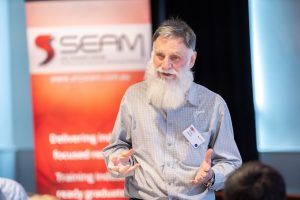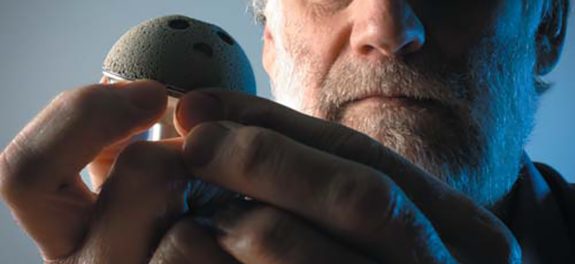EVENT DETAILS
Keynote presentation by Distinguished Professor Chris Berndt (Swinburne University of Technology) from the IMAT2020 Conference
Click on the image to watch the presentation.
Download the PowerPoint: Beautiful microstructures (26.Oct.2020).PDF
ABSTRACT
Thermal spray, especially, exhibit chaotic microstructures that can be managed and structured on the basis of advances in statistical process control and diagnostic devices. It can be rightly claimed that thermal spray coatings are the original ‘nanomaterial’, ‘composite material’, ‘functionally graded material’, the first modern day ‘additive manufacturing technology’, and many other materials engineering firsts. Thermal spray is now in university syllabus’s and rarely needs to be explained to engineers. It has ‘come of age’ and is predestined to become a household word. However, thermal spray, among the portfolio of surface coating technologies, is most often focussed on mimicking the microstructure of bulk materials. Thermal spray opportunities regarding the microstructure include (i) layered microstructures, (ii) composites that establish tailored material properties, and (iii) rapid cooling rates to create unusual alloys with extended solubility. Why are modern technologists missing these opportunities with a closed mindset? Hence, this presentation will focus on 3 examples where the unique microstructures created by thermal spray processing confer specific attributes:
- High entropy alloys (HEAs): Manufacturing the next generation of alloys for harsh and extreme environments.
- Thermal protection systems (TPSs): Heat resistance and high conduction coatings that exhibit functional criteria distinct from TBCs.
- Antimicrobial coatings: Surfaces that kill microbes and virus’s are of immense societal importance and economic value. Thermal spray has a positive record for beneficial outcomes.
In summary: The traditional, conservative mindset must be, respectfully, set aside. The next generation of coatings and equipment will only be propelled by key learnings that are based on understanding the deep science and technology of these beautiful microstructures.
For further information email: cberndt@swin.edu.au

PRESENTED BY:
Distinguished Professor Chris Berndt
(Swinburne University of Technology)
DATE
26 - 28 October 2020


